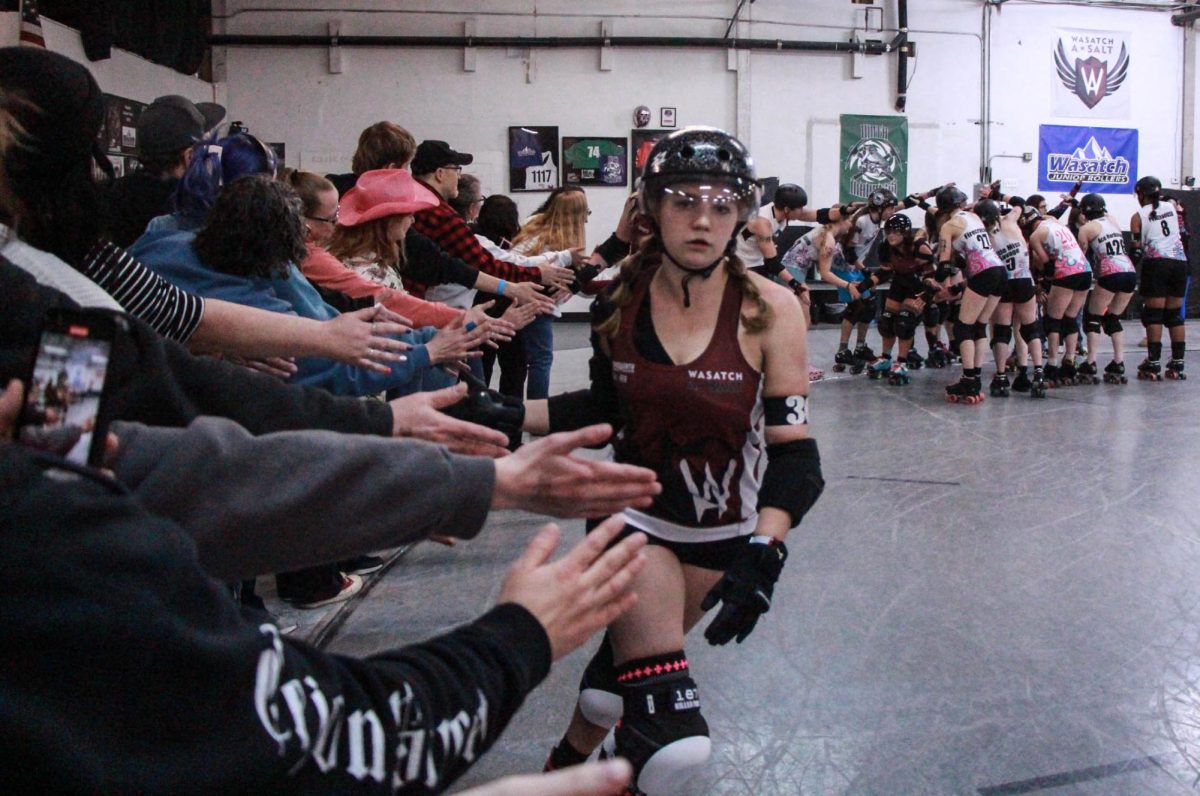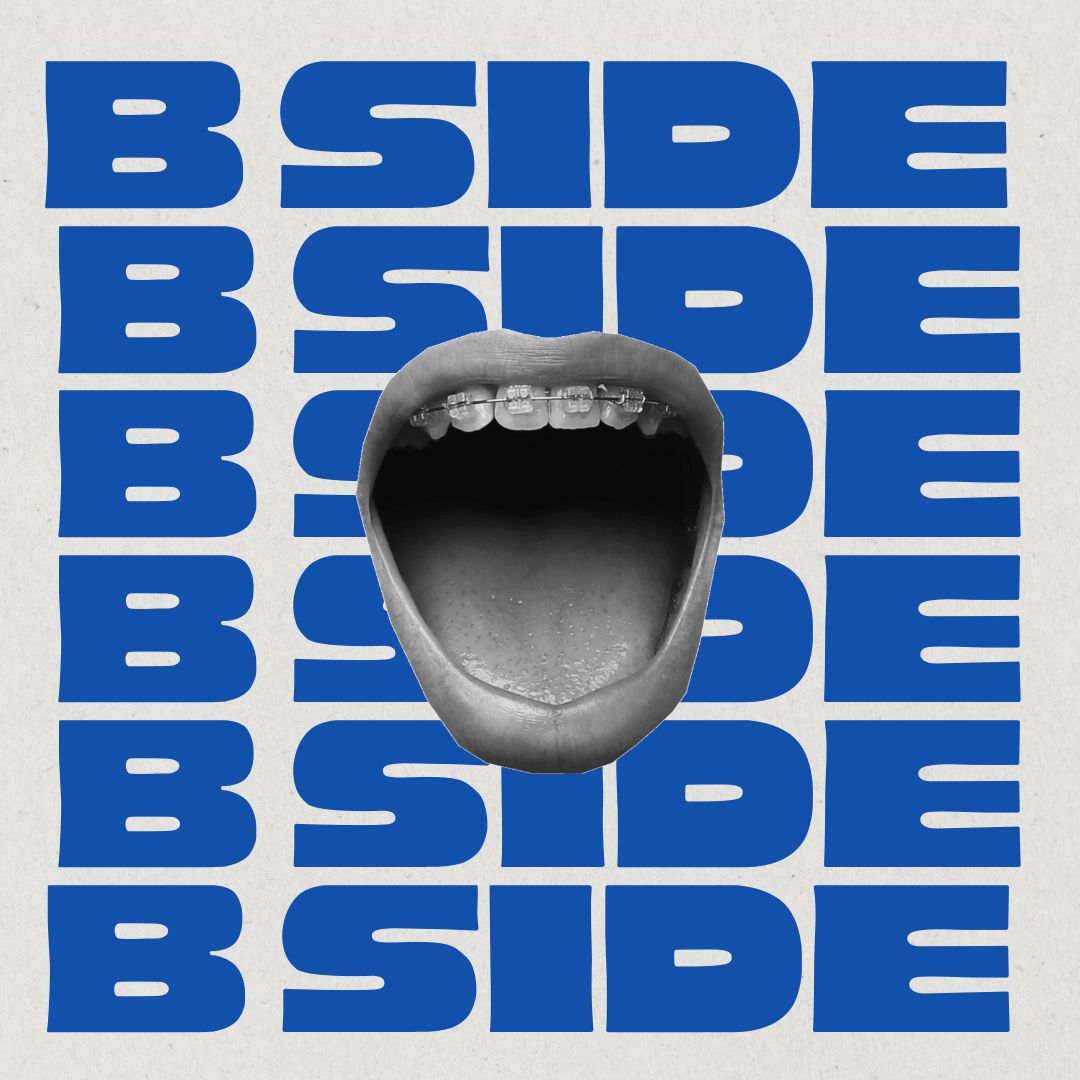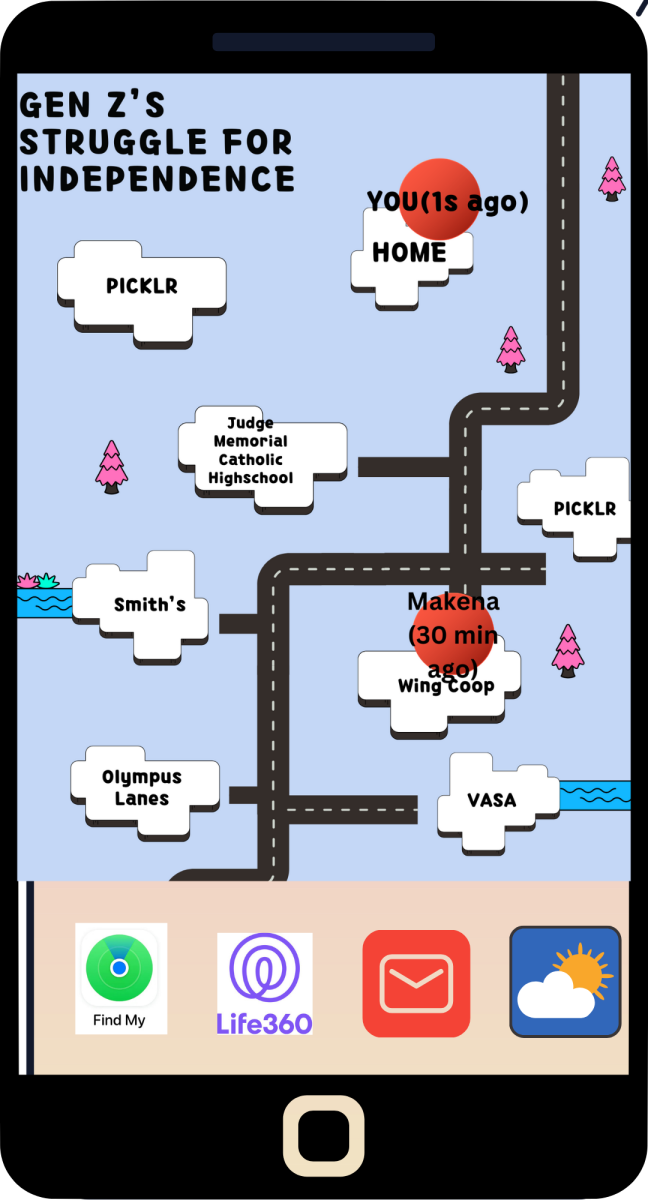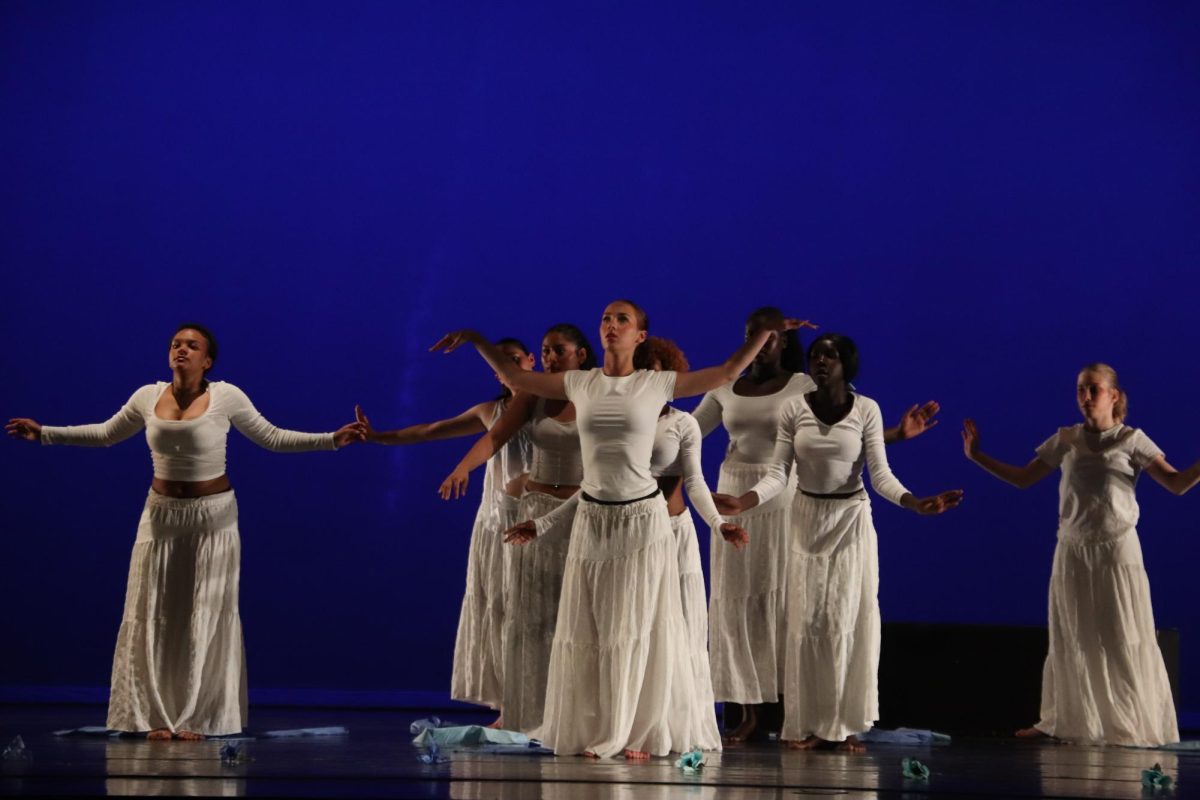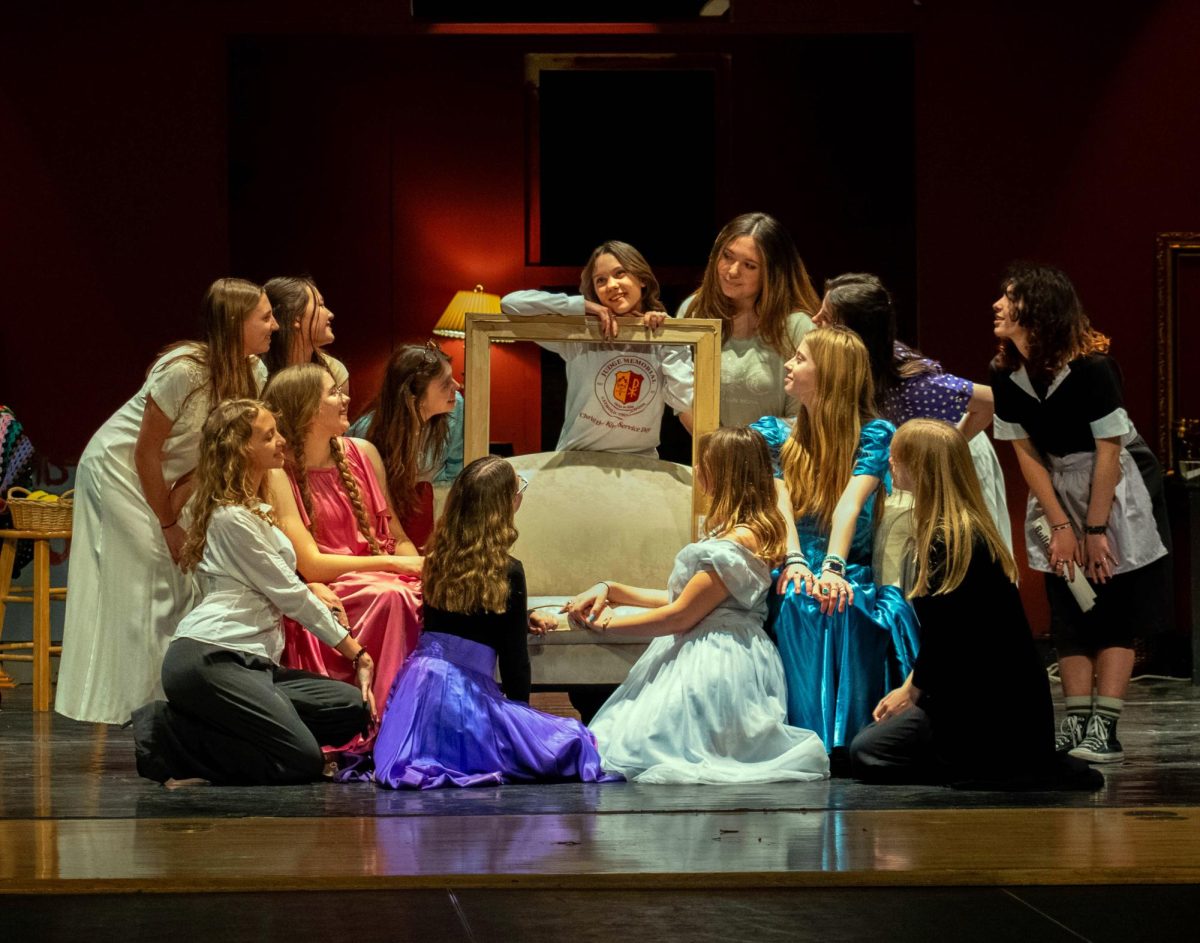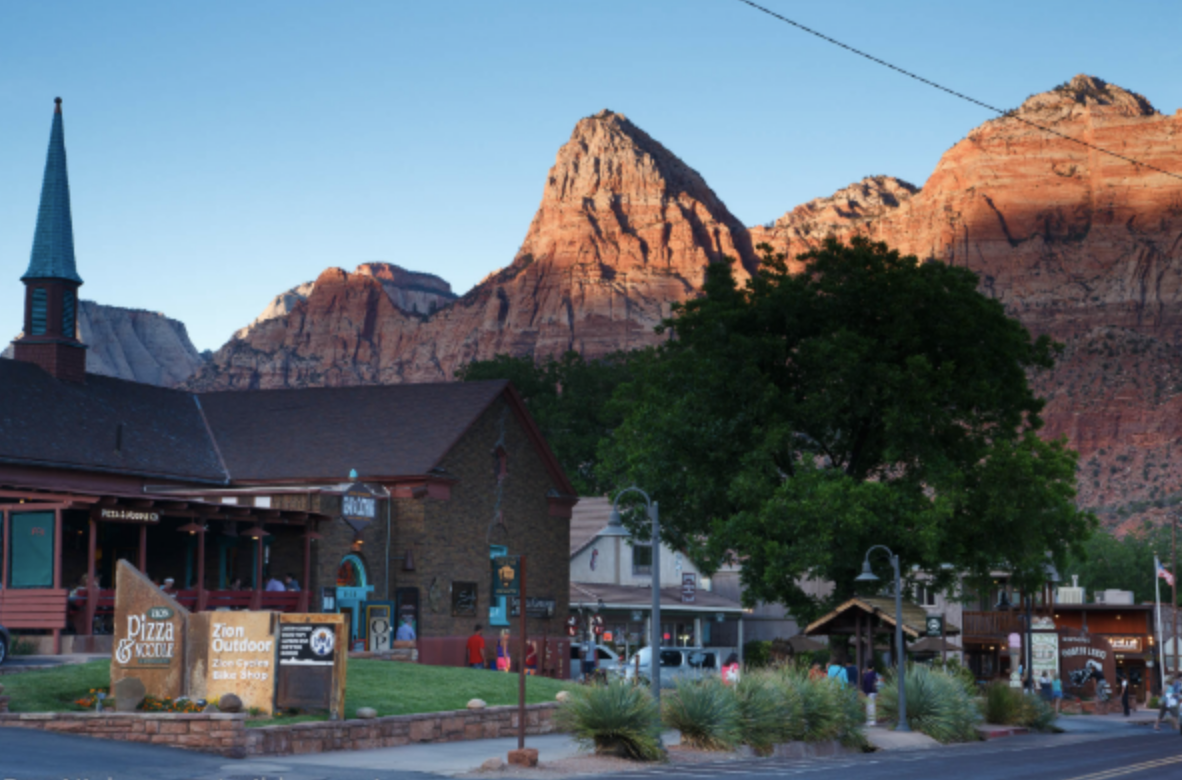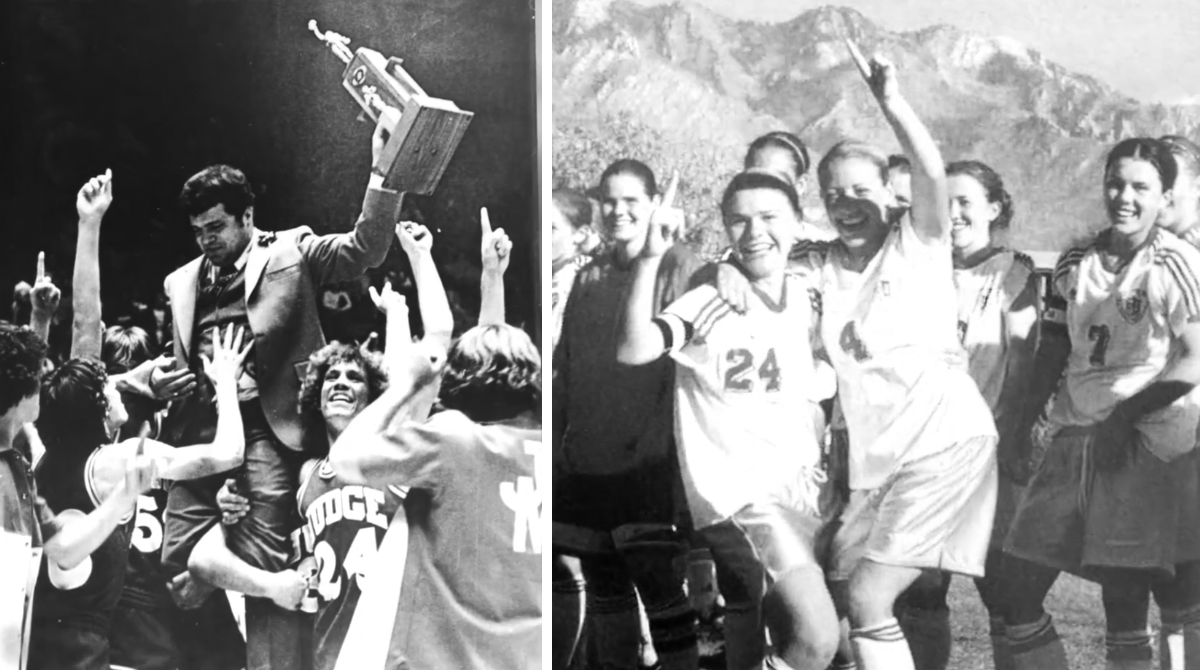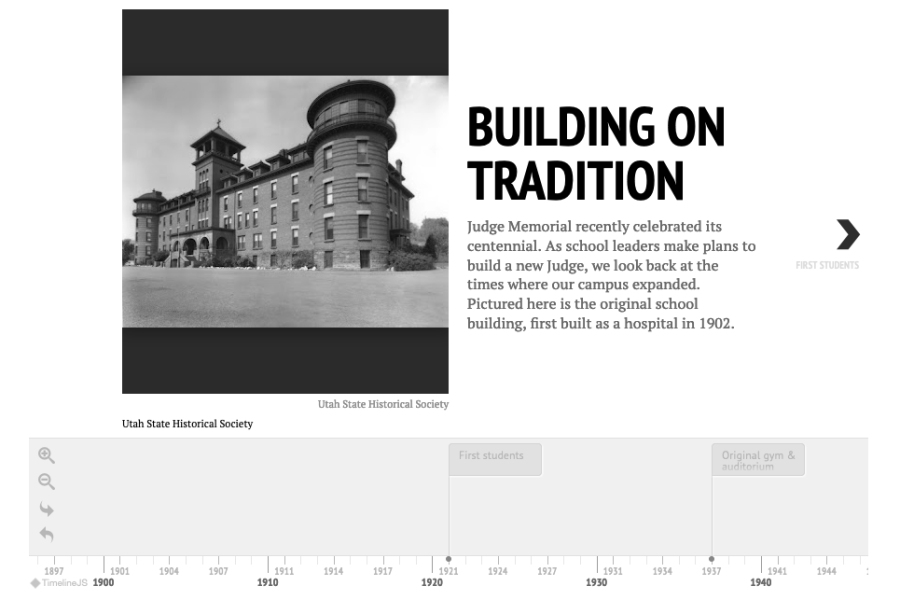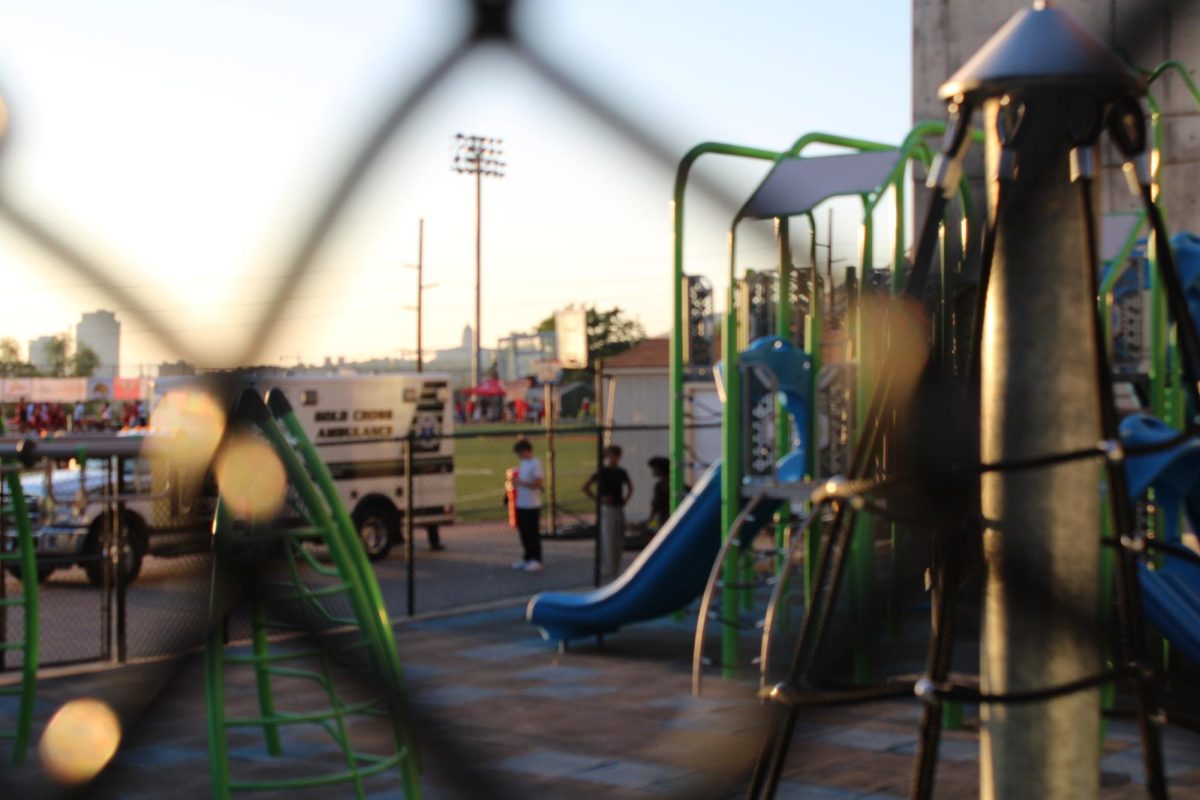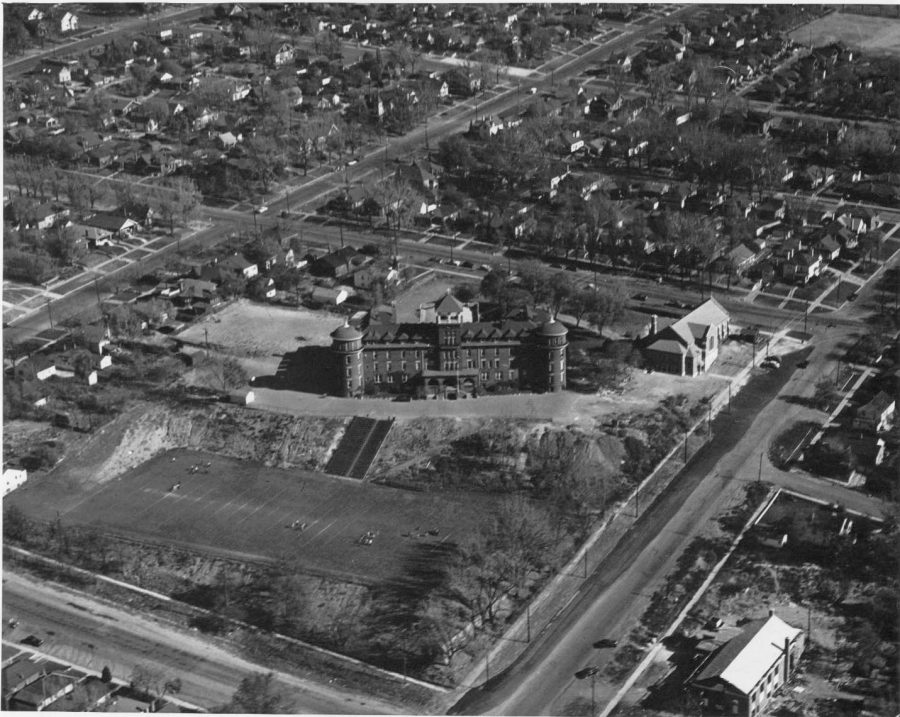1934: Despite Great Depression Judge adds on
The current dance studio was built in the ’30s
Overhead view of the campus showing the original hospital and, behind it, the ‘new’ gym and auditorium.
September 25, 2022
By the mid-1930s a second building was finished on Judge’s campus. It was the original gym, auditorium, and cafeteria and served as the school’s auditorium until the late 1980s. Now it’s the Weigand Dance Studio. When it was built, it was a much-needed facility for a school that didn’t have a gym.
What was it like to be a Judge student in the ’30s?
The Thirties was a time when kids read Gasoline Alley, and Katzen Jammer Kids in the Sunday newspaper. Families would sit around the radio and listen to the daily news or dramas like Little Orphan Annie and The Shadow.
The Thirties also marked a very dark time in U.S. history. The Great Depression was a time when unemployment was over 25%. Nebraska and Oklahoma turned into a giant dust bowl, eradicating crops, and farmers’ chance for an income during those years. The stock market had crashed, and thousands of people were thrust into poverty.
Mary Lou Dolan, mother of former Judge English teacher Tim Dolan, was born in 1929 to a family living in rural Nebraska. She experienced first hand the financial hard ships of The Great Depression and the Dust Bowl.
“I remember being very poor,” she says, “We had no electricity in the home except for one radio. Dad would listen to the news religiously, every night at six. “I remember reading Gasoline Alley in my room late at night, by the light of a kerosene lamp. Sometimes Mom would catch me; I’d have plenty of chores to do the next morning.”
Teens in Salt Lake experienced similar things. “Economically, the nation was in a Depression. The years that I was at Judge were affected by the nation’s economic woes which were severe at that point in time,” said Irene McFarland Gunville, who attended Judge through 1934.
Phyllis Sakech Syner, a 1940 Judge graduate, agreed. “My childhood years were largely dominated by the Depression. And my early adult years were dominated by WWII. The mood at the time was very sober, but certainly not depressed or hopeless. Americans responded magnificently.”
Ninety years ago, kids weren’t entertained by memes on their phones; they had Sunday morning cartoons in the paper. Comic strips in the Sunday paper were a big source of entertainment for kids of all ages. Some of those cartoons are still around today; Popeye the Sailor, Superman, and Dick Tracy are all examples of surviving, classic entertainment.
The Depression was a hard time for Americans, but Judge still found the resources to build.

